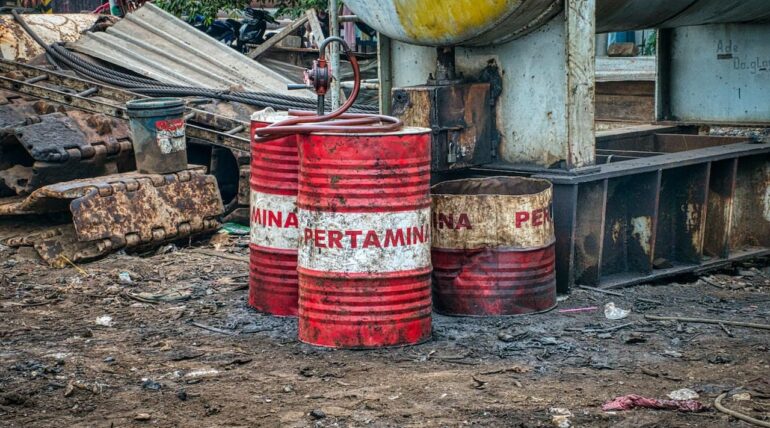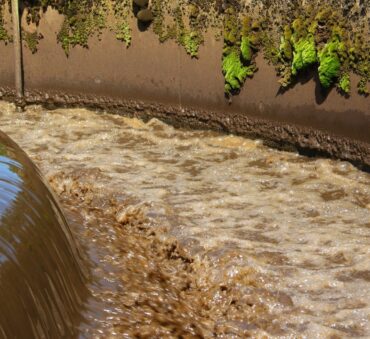Chemical waste, with its ubiquitous presence and potential hazards, stands as one of the prominent environmental issues of our time. From the vast industrial complexes to the confines of our homes, this waste is generated at an alarming rate. Its impact isn’t just limited to the environment; it extends to our health, the safety of our communities, and the legacy we leave for future generations. As we grapple with the challenges of a rapidly advancing world, the importance of effective chemical waste management becomes increasingly clear. It’s not just about disposal; it’s about understanding, responsibility, and proactive action.
First things first, let’s set the firm foundation to understand what constitutes chemical waste and where it originates from.
Key Takeaways
- Chemical waste is a significant environmental concern, affecting not only the environment but also human health, community safety, and the legacy for future generations.
- Chemical waste is generated from various sources. Each source has its unique set of chemical byproducts.
- Addressing the risks of chemical waste requires strategies such as reducing waste generation at its source, recycling, and reusing materials.
- Chemical waste disposal methods vary based on the type of waste and the source. However, they most commonly include incineration, landfills designed for chemical waste, chemical treatment, and ocean dumping.
- Both businesses and individuals have a significant responsibility for the correct disposal of chemical waste. Mishandling can lead to environmental harm, health risks, and legal consequences.
Different types of chemical waste
Hazardous vs. non-hazardous
Hazardous chemical waste is characterized by its potential to pose significant threats to the environment or public health. These substances can be toxic, corrosive, flammable, or reactive, meaning they can cause adverse reactions when they encounter other substances. These include substances such as:
- Mercury
- Battery acid
- Industrial solvents
- Ammonia
On the other hand, non-hazardous chemical waste, while not posing immediate threats, still needs to be managed responsibly to prevent potential environmental or health impacts. These substances are generally not toxic or reactive, but improper disposal can still lead to pollution and other adverse effects. Some examples include:
- Hand sanitizer
- Cooking oils
- Non-toxic cleaning solutions
Liquid vs. solid
Liquid chemical waste consists of chemicals in a fluid state, often resulting from industrial processes, laboratory experiments, or household products. These often include substances like:
- Solvents
- Wastewater
- Chemical residues.
We have a complete example about cleaning products disposal to give you a better idea of how to handle this category.
Solid waste includes tangible items. While they might not spill like liquids, they can leach harmful substances, especially when exposed to moisture or other environmental factors. Examples of these include:
- Contaminated protective equipment
- Used filters
- Chemical-soaked rags.
Sources of chemical waste
Industries
Industries span a broad spectrum, from manufacturing units crafting everyday products to mining operations extracting valuable minerals to food and textile production in Agriculture. Each of these sectors has its unique set of chemical byproducts that arise from its operations.
Laboratories
Laboratories, whether they’re research, medical, or educational, are hubs for chemical usage. Each type of lab, with its specific focus, uses a distinct set of chemicals, often leading to varied waste profiles.
Households
Our homes are more than just living spaces; they’re microcosms of chemical usage. From the cleaning products that keep our spaces sparkling to the cosmetics we use daily, and the batteries that power our gadgets, households are significant contributors to the chemical waste stream. Even discarded medications play a role in this scenario.
For more information, check out our in-depth cosmetics disposal guide.
Healthcare Facilities
Treatments, surgeries, and routine medical activities in healthcare facilities produce significant amounts of chemical waste, such as expired medications, used disinfectants, solvents, and other potentially harmful chemicals. The sheer volume and variety emphasize the importance of meticulous waste management in these establishments.
Automotive Sector
The automotive sector, particularly vehicle maintenance, is a notable source of chemical waste. Essential fluids such as antifreeze, brake fluid, and transmission fluid, when discarded or replaced, become chemical waste that requires proper disposal.
Chemical Waste Management
When chemical waste meets the environment without intervention, the consequences ripple through ecosystems and communities, causing severe environmental and health risks. Addressing these risks and challenges demands an adept dual strategy from both ends of the process:
Reducing Chemical Waste Generation
The first line of defense is to curb waste at its source. This can be done by modifying industrial processes, embracing cleaner technologies, and opting for materials that generate less waste.
Recycling and Reusing
There are a number of opportunities to recycle or reuse these materials. For instance, purifying and reusing solvents and recycling metals retrieved from waste, are viable paths that conserve both energy and resources.
Regulatory frameworks and guidelines in the US
Understanding chemical waste management in the U.S. hinges on key regulatory frameworks that guide the process. Here are the primary ones:
Resource Conservation and Recovery Act (RCRA):
Aims to provide a structured system for managing solid and hazardous waste, ensuring environmentally sound practices from generation to disposal.
Comprehensive Environmental Response, Compensation, and Liability Act (CERCLA):
Addresses sites contaminated with hazardous substances, allowing the EPA to clean up these sites and hold responsible parties accountable for the cleanups.
Toxic Substances Control Act (TSCA):
Grants the EPA the authority to regulate the production, import, use, and disposal of specific chemicals, requiring necessary reporting, record-keeping, and testing.
Clean Water Act (CWA):
Regulates the discharge of pollutants into U.S. waters, establishing wastewater and water quality standards for various contaminants.
Clean Air Act (CAA):
Controls air pollution at a national level by setting standards for emissions of hazardous air pollutants, which can include chemical wastes.
Emergency Planning and Community Right-to-Know Act (EPCRA):
Mandates industries to report on the storage, use, and release of hazardous chemicals to federal, state, and local governments, ensuring community awareness of potential chemical hazards.
Hazardous Materials Transportation Act (HMTA):
Provides guidelines for the safe transportation of hazardous materials, including certain chemical wastes, by various modes of transport.
How to Dispose of Chemicals
Disposing of chemicals safely is a vital task that requires meticulous attention to detail. The procedures vary significantly between household chemical waste and laboratory chemical waste. Here, we outline a step-by-step guide for each:
Disposing of Household Chemicals
- Identification and Separation: Identify the household products that are considered hazardous, such as cleaning agents, paints, and batteries, and then separate these items from regular waste.
- Storage: Store the separated chemicals in their original containers to prevent the mixing of different chemicals. Ensure that the containers are sealed tightly to avoid leaks.
- Transportation: Transport the chemicals to a designated collection facility or recycling center. Be sure to handle the containers with care to prevent spills.
- Disposal: Follow the disposal instructions provided at the collection facility.

Disposing of Industrial and Laboratory Chemicals
Identification and Separation
Begin by accurately identifying each chemical using its label or Material Safety Data Sheet (MSDS). Group chemicals by compatibility, ensuring that reactive substances are kept apart.
Storage
Store chemicals in labeled, sealed containers, preferably in their original packaging. Place them in a cool, dry area away from direct sunlight and heat sources. If possible, use secondary containment trays to prevent spills, and ensure that storage areas have adequate ventilation.
Transportation
When moving chemicals, use appropriate containers and ensure they are tightly sealed. Handle with care, use protective equipment, and avoid transporting incompatible chemicals together. You could also consider using a certified chemical waste pickup service for transportation but ensure that the personnel handling the waste are trained in safe handling procedures.
Disposal
Refer to local regulations and guidelines for proper disposal methods. Some chemicals may require neutralization or special treatment. Always use authorized disposal facilities and services for hazardous waste. Remember to always maintain a waste disposal log for record-keeping. Alternatively, you could seek the help of a professional disposal company to ensure that the waste is disposed of correctly and according to regulatory standards.
Methods of Chemical Waste Disposal
There are several options available to dispose of chemical waste, each with its own benefits and challenges:
Incineration
Incineration involves burning chemical waste at high temperatures to convert it into ash, water vapor, and gases. This method is particularly used for hazardous waste that cannot be recycled or disposed of in other ways.
Benefits:
- Reduces the volume of waste significantly.
- Destroys many hazardous contaminants, rendering the waste harmless.
- Can generate energy in the form of heat, which can be used for electricity production.
Problems:
- Emissions can contain harmful pollutants if not properly controlled.
- Requires significant energy input.
- Ash residue may still contain hazardous materials and may need further treatment or disposal.

Landfills Designed for Chemical Waste
These are specially engineered sites where chemical waste is isolated from the environment. They are constructed with liners and other protective measures to prevent the leaching of chemicals into the soil and groundwater.
Benefits:
- Provides long-term containment of waste.
- Regular monitoring ensures environmental safety.
- Suitable for a wide range of non-recyclable chemical wastes.
Problems:
- Potential for leachate (liquid that has percolated through waste) to contaminate groundwater if the landfill’s protective systems fail.
- Limited lifespan; landfills eventually reach capacity.
- Methane, a potent greenhouse gas, can be produced as waste breaks down.
Chemical Treatment
This method involves using chemicals to neutralize or stabilize waste. It can transform hazardous waste into non-hazardous waste or reduce its volume.
Benefits:
- Can render hazardous waste non-toxic.
- Reduces the risk of contamination during transportation since waste can be treated on-site.
- Can make waste suitable for further disposal methods, like landfilling.
Problems:
- Requires expertise to ensure complete neutralization.
- Some treatments can produce secondary waste that needs further management.
- Potential for harmful reactions if not conducted correctly.
Each disposal method has its place in the spectrum of waste management solutions, but the choice of method should be based on the type of waste, environmental considerations, and available resources.

Conclusion: Responsible Chemical Waste Management
Businesses and individuals alike bear a significant responsibility when it comes to the correct disposal of chemical waste. Mishandling or neglecting this duty can lead to environmental degradation, health risks, and legal repercussions. It’s imperative to recognize that every action, from a company’s large-scale waste disposal to an individual’s disposal of household chemicals, has a cumulative impact on our planet.
That’s why we at Shapiro are making every effort to play our part in ensuring that it is safely disposed of and, whenever possible, recycled to maximize resource efficiency and promote a more circular economy. By partnering with us, businesses can navigate the challenges of waste disposal confidently, ensuring they contribute positively to our planet’s well-being.
Contact us today!
Frequently Asked Questions
Proper disposal of chemical waste is more than just a regulatory requirement; it’s a commitment to our environment and public health. By ensuring that these wastes are managed correctly, we prevent potential harm to our ecosystems and communities. It’s about safeguarding our future and upholding our responsibility to the planet.
While not all chemical waste is hazardous, a significant portion can be due to certain properties that might be toxic, corrosive, or even flammable. It’s essential to differentiate between the types, as hazardous chemical waste requires special attention to prevent harm to both the environment and human health.
The environment is a delicate system, and improper disposal of chemical waste can disrupt its balance. This can lead to contamination of our water sources, soil, and air. Over time, these pollutants can harm wildlife, plant life, and even pose risks to human health. Proper disposal is our way of ensuring that the balance is maintained.
Common chemical wastes often include solvents, paints, pesticides, batteries, and fluorescent lamps. These are frequently encountered in various settings, from industries to our homes, emphasizing the importance of managing them correctly.
It’s a specially designed storage solution for chemical waste. Think of it as a protective shield, ensuring that the waste is contained safely, preventing any leaks or spills. These containers vary in size and material, tailored to the specific type of chemical waste they’re meant to hold.
The chemical manufacturing industry is often at the top of the list, given the nature of their work. However, other sectors, like petroleum, pharmaceuticals, and mining, also contribute significantly due to their extensive use of chemicals.
Disposing of chemicals isn’t just about tossing them away. It involves a series of steps, from identifying the type of waste, using the right containers, to following local guidelines. And for businesses, partnering with experts in the field, like Shapiro, can make the process seamless and compliant.
Baily Ramsey, an accomplished marketing specialist, brings a unique blend of anthropological insight and marketing finesse to the digital landscape. Specializing in educational content creation, she creates content for various industries, with a particular interest in environmental initiatives.



